The Jim and Vanita Oelschlager
Native American Ethnographic Collection
"Drums, Tomahawks, and the Horse: Native American Cultural Tools"
Striking Tools
Striking tools include all tools that were used in a swinging arm motion. This group includes stone clubs, ballheaded clubs, and tomahawks. The three main materials used to make tools were: lithic (stone), wood, and metal. Clubs were often decorated with images representing the warrior’s guardian spirit, thus accessing spiritual power for protection and success in combat. Although most Native American tribes used these types of tools, the types in this exhibition were used extensively throughout the Great Plains. Style, materials, and decorations vary by region and degree of European contact.
Tomahawks or war clubs came in many styles, reflecting the tribes’ geographical region and trade networks. Most notable in this collection are the pipe tomahawk, the “spontoon tomahawk,” and the Missouri war club, and European observers noted that the Cherokee adopted the pipe tomahawk in about 1750s, stating, “this is one of their most useful field-furniture, serving all the offices of hatchet, pipe, and sword.”
Tomahawks
The tomahawk is the most well known of the striking tools; it is an elaboration of the hatchet style used by most native groups as a multipurpose tool.
The blades for the familiar tomahawks were often prized trade items; the metal blades were made in Europe and traded for furs in eastern America, then introduced to tribes farther west by traders and trade networks.
Native tribes made their own handles. As they had more access to metal, they began making blades from other European tools.
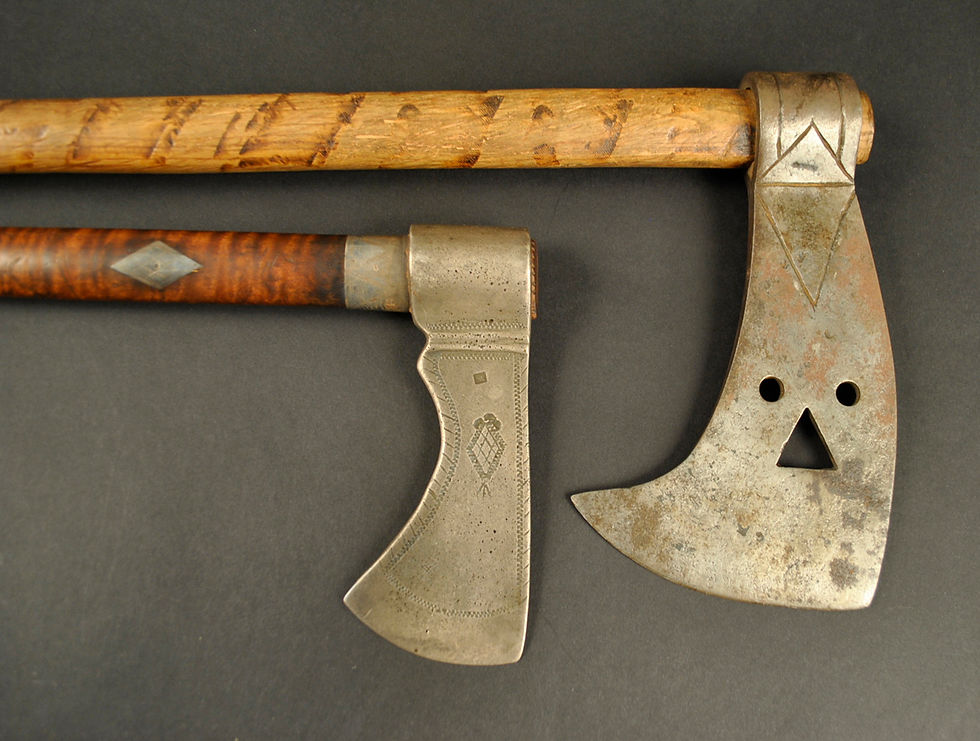
top: NAI.220.2010 bottom: NAI.130.2010

top: NAI.220.2010 bottom: NAI.130.2010

Tomahawk ca. 1860 Great Lakes Wood, Metal. 25" x 7.5"

Tomahawk ca. 1860 Great Lakes Wood, Metal. 25" x 7.5"

Tomahawk ca. 1860 Great Lakes Wood, Metal. 25" x 7.5"

Tomahawk ca. 1790 Great Lakes Maple wood, Silver, Metal. 19.25" x 5.75"

Tomahawk ca. 1790 Great Lakes Maple wood, Silver, Metal. 19.25" x 5.75"
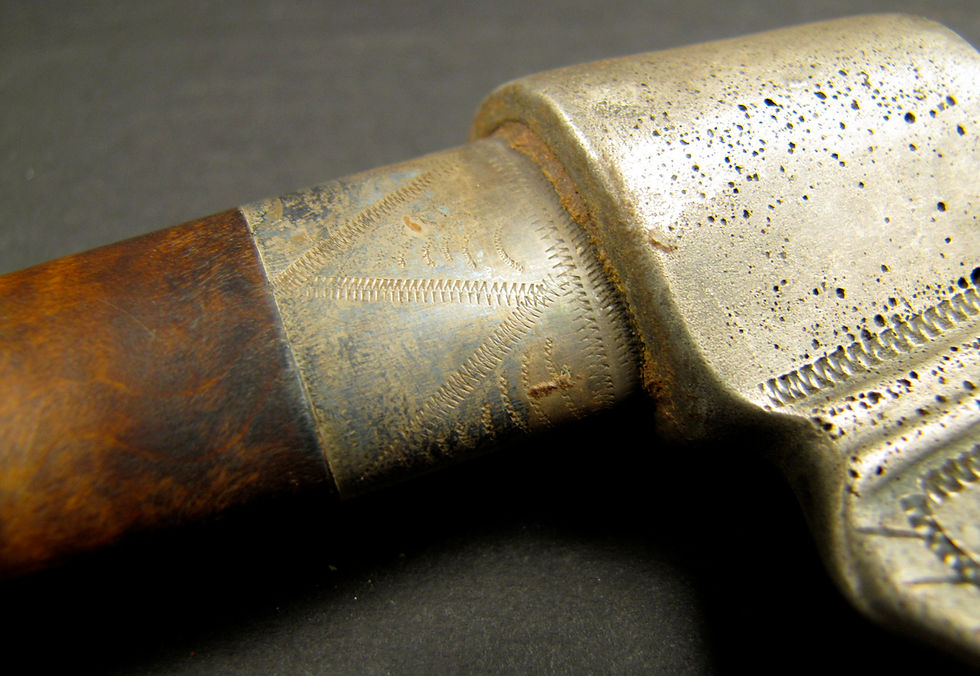
Tomahawk ca. 1790 Great Lakes Maple wood, Silver, Metal. 19.25" x 5.75"
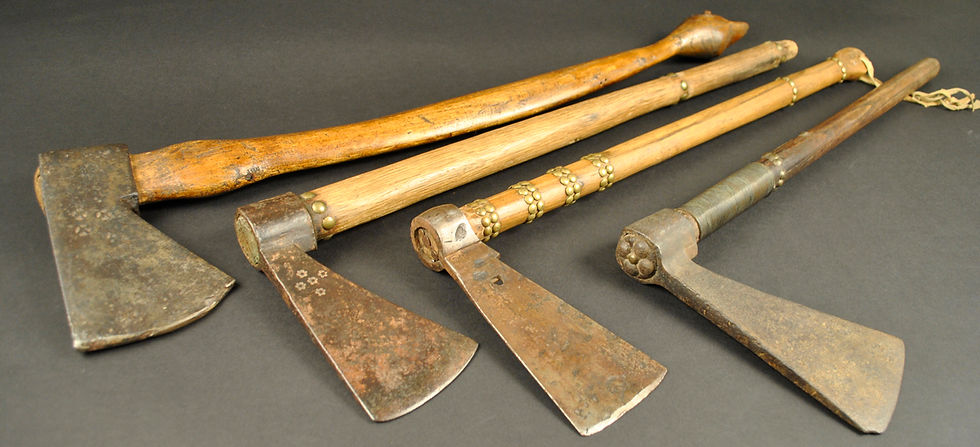
left to right: NAI.139.2010, NAI.222.2010, NAI.134.2010, NAI.195.2010

top to bottom: NAI.135.2010 NAI.43.2010 NAI.122.2010

Pipe Tomahawk ca. 1870 Striking Tool. Lakota. Great Plains. Wood, Metal.
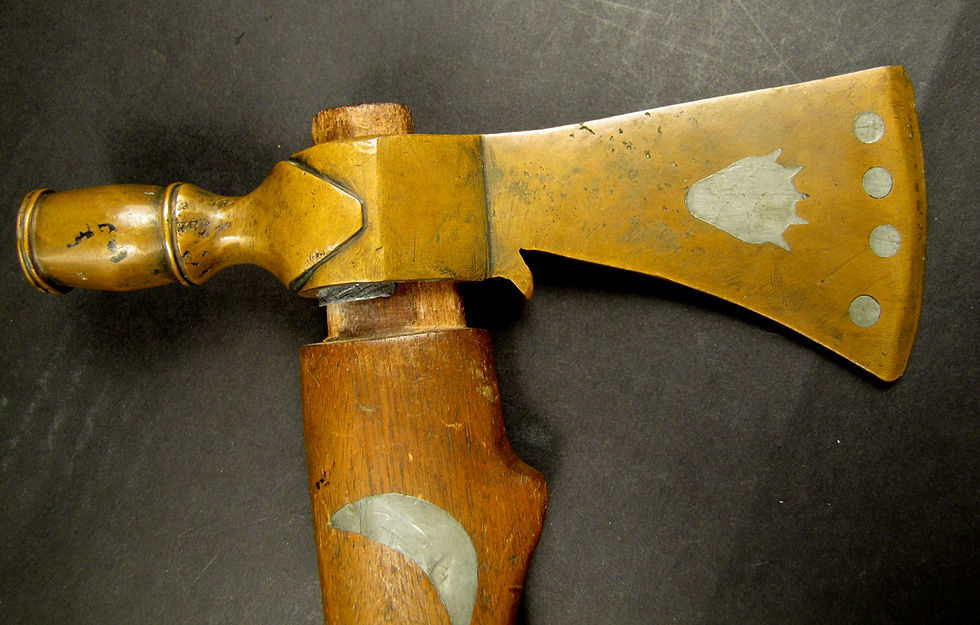
Pipe Tomahawk ca. 1870 Striking Tool. Lakota. Great Plains. Wood, Metal.

Pipe Tomahawk ca. 1870 Striking Tool. Lakota. Great Plains. Wood, Metal.
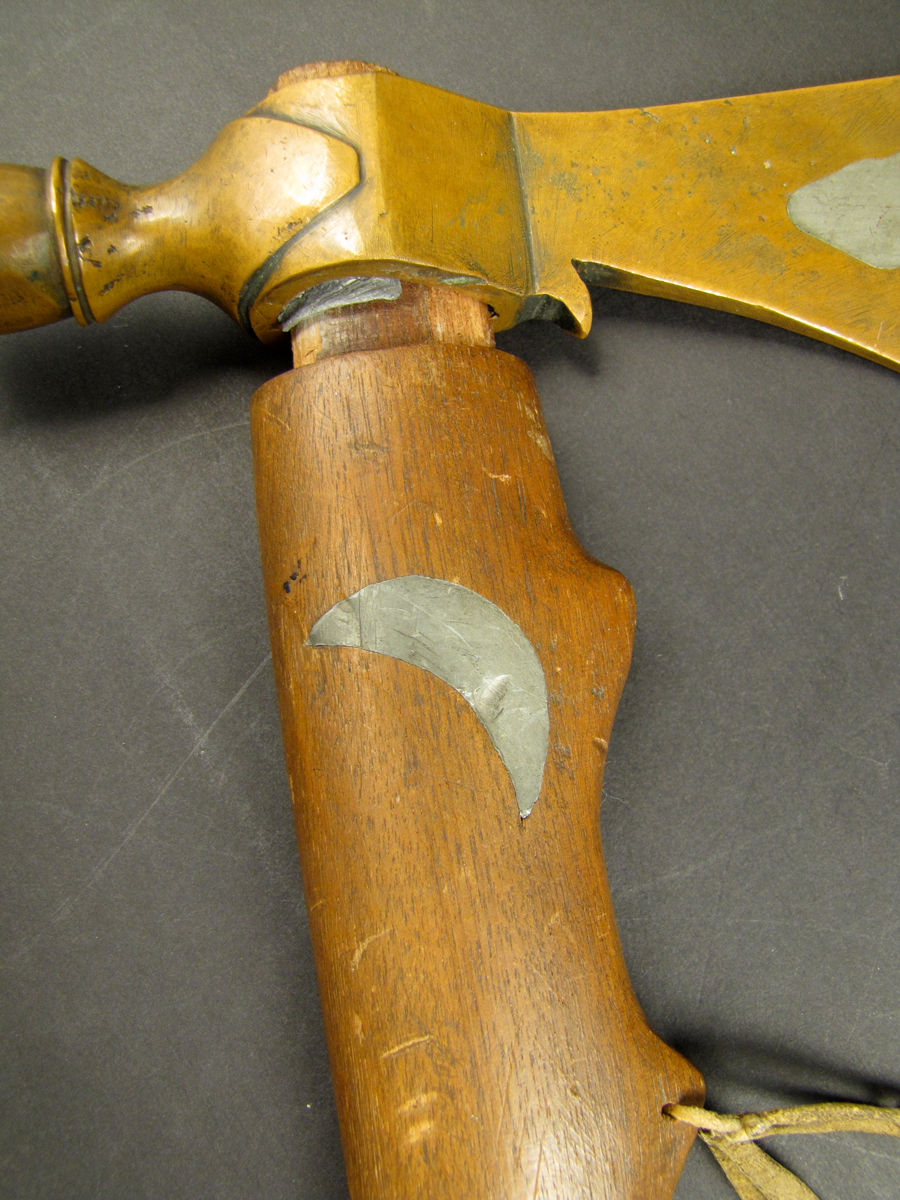
Pipe Tomahawk, ca. 1870 Striking Tool. Lakota. Great Plains. Wood, Metal.
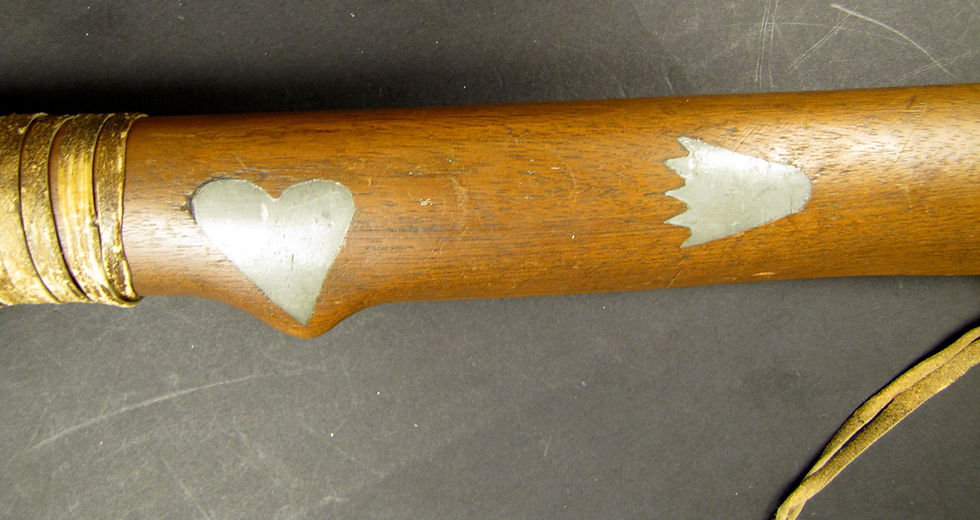
Pipe Tomahawk ca. 1870 Striking Tool. Lakota. Great Plains. Wood, Metal.

Pipe Tomahawk ca. 1870 Striking Tool. Lakota. Great Plains. Wood, Metal.
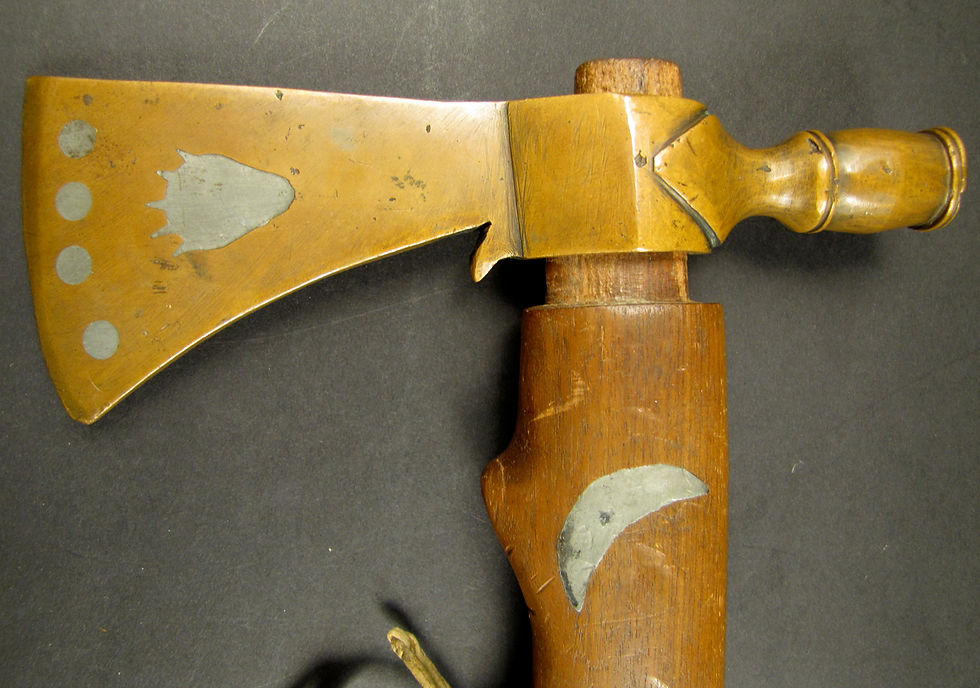
Pipe Tomahawk ca. 1870 Striking Tool. Lakota. Great Plains. Wood, Metal.
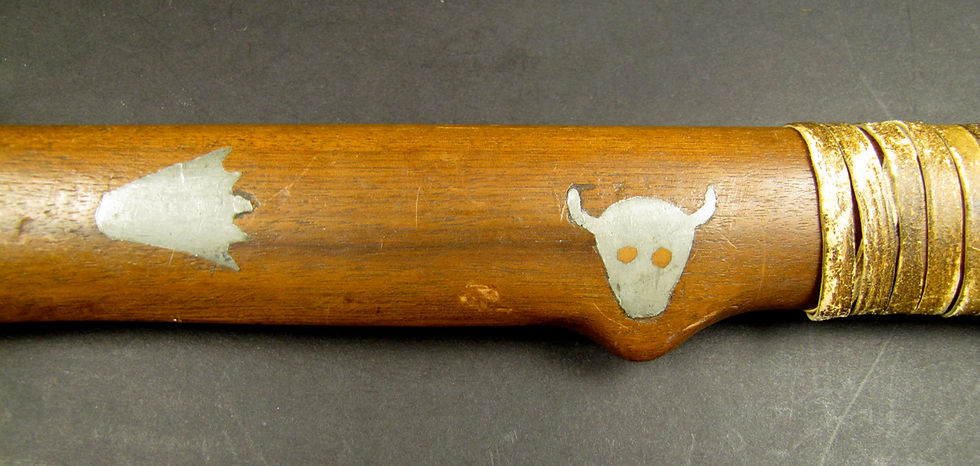
Pipe Tomahawk ca. 1870 Striking Tool. Lakota. Great Plains. Wood, Metal.
Missouri Style Hatchet
The Mandan, who lived in the middle Missouri River area, were also using the Missouri war hatchet when the Lewis and Clark expedition spent the winter there in 1805.
They and other tribes in the region traded furs with the French in exchange for metal hatchet heads. Meriwether Lewis considered the war hatchet “very inconvenient,” but the expedition blacksmith was kept busy making new metal heads to trade for corn during their long winter stay with the tribe.
This type of hatchet has a thin iron edge and decorative piercings of a “bleeding heart.”
Spontoon Tomahawk
The Lewis and Clark expedition found the Mandan using the “spontoon tomahawk.”
The Mandan considered it old fashioned in 1805, indicating it had been part of the tools they acquired from the French traders much earlier.
Although most tomahawks were usually very decorated, the decorations on this type resembled the French “fleur-de-lis,” and it also had a large, heavy blade.
Although not a favorite of the Mandan, they were still prized by the Crow into the 1900s.
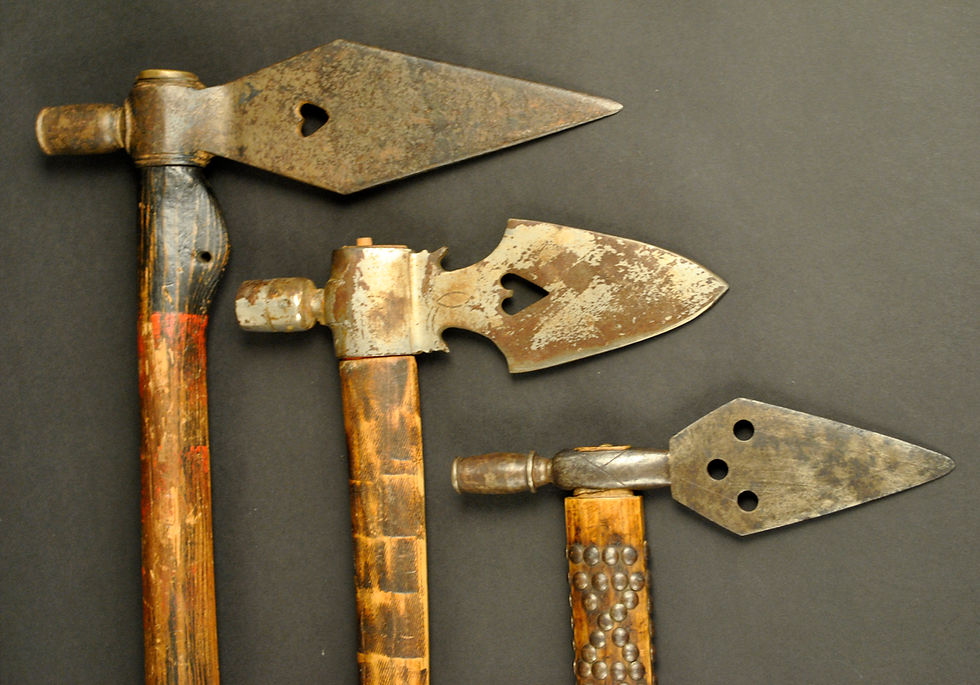
left to right: NAI.133.2010 NAI.126.2010 NAI.131.2010
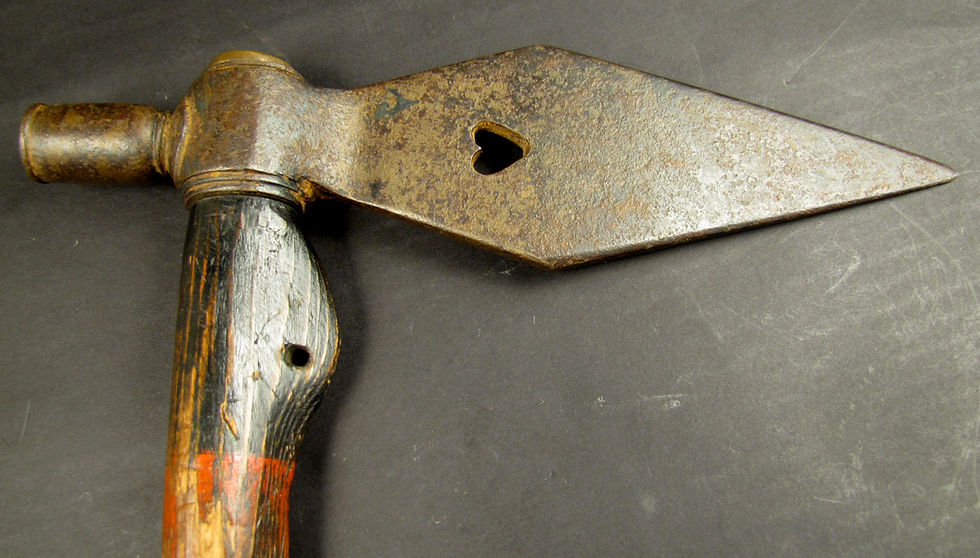
Pipe Tomahawk ca. 1850 Striking Tool. Blade Type: Spontoon Style. Great Plains. Wood, Metal.

Pipe Tomahawk ca. 1850 Striking Tool. Blade Type: Spontoon Style. Great Plains. Wood, Metal.

Pipe Tomahawk ca. 1850 Striking Tool. Blade Type: Spontoon Style. Great Plains. Wood, Metal.
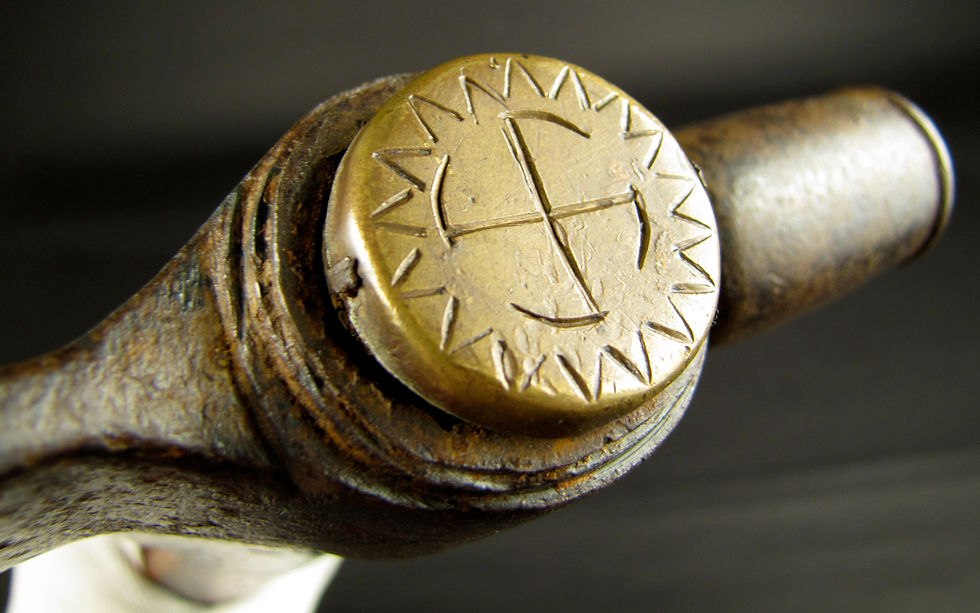
Pipe Tomahawk ca. 1850 Striking Tool. Blade Type: Spontoon Style. Great Plains. Wood, Metal.

Pipe Tomahawk ca. 1850 Striking Tool. Blade Type: Spontoon Style. Great Plains. Wood, Metal.

Pipe Tomahawk ca. 1870 Striking Tool. Blade Type: Spontoon Style. Sioux. Great Plains. Wood, Metal, Tanned Hide.

Pipe Tomahawk ca. 1870 Striking Tool. Blade Type: Spontoon Style. Sioux. Great Plains. Wood, Metal, Tanned Hide.

Pipe Tomahawk ca. 1870 Striking Tool. Blade Type: Spontoon Style. Sioux. Great Plains. Wood, Metal, Tanned Hide.
Clubs
Striking clubs had four main types: the pickaxe, sword, gun-shaped and ballhead types.
Many tribes used these types; the pickaxe is described as early as 1540 by the Spanish explorer DeSoto.
They were called tomahawks among some southeastern tribes.
This exhibition has several interesting examples of the ballhead types. Although originally made as weapons, they were also decorated and traded widely.

left to right: NAI.230.2010 NAI.59.2010

Ballheaded Club ca. 1860 Iroquois - Great Lakes Wood, Metal. 24.5" x 10" x 3.5"

Ballheaded Club ca. 1860 Iroquois - Great Lakes Wood, Metal. 24.5" x 10" x 3.5"

Ballheaded Club ca. 1860 Iroquois - Great Lakes Wood, Metal. 24.5" x 10" x 3.5"

Ballheaded Club ca. 1910. Iroquois - Great Lakes. Wood, Metal, Tacks, Paint. 22.2" x 9.7"
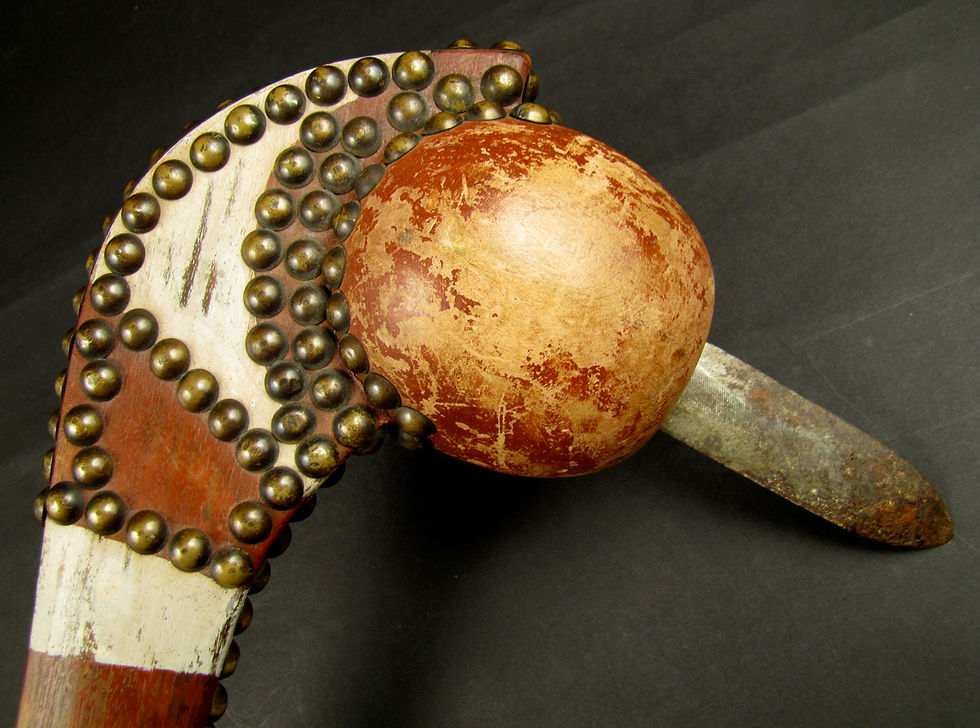
Ballheaded Club ca. 1910. Iroquois - Great Lakes. Wood, Metal, Tacks, Paint. 22.2" x 9.7"

Ballheaded Club ca. 1910. Iroquois - Great Lakes. Wood, Metal, Tacks, Paint. 22.2" x 9.7"

Ballheaded Club ca. 1910. Iroquois - Great Lakes. Wood, Metal, Tacks, Paint. 22.2" x 9.7"

Ballheaded Club ca. 1910. Iroquois - Great Lakes. Wood, Metal, Tacks, Paint. 22.2" x 9.7"